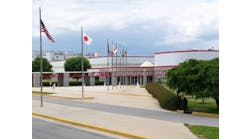Pricing actions were frequent in 2021, and more have already rolled into the new year,. Analyst John Healy says on average those price hikes resulted in a 20% increase over 2020 prices. Interestingly, he says the cost to build an average tire went up 24% in 2021.
If current input prices hold steady, Healy predicts that cost will go up another 9% in 2022.
And that's just one piece of the puzzle in pricing. Transportation costs and tariffs are at play in the tire industry, too. Healy — who tracks the domestic tire industry for Northcoast Research Holdings LLC and also writes MTD’s monthly Your Marketplace column — covers the dollars and cents as we look ahead in this latest installment of his year-in-review and look ahead for tire dealers.
MTD: Most tire manufacturers reported robust third quarter results. What are you hearing from tire dealers? Are they experiencing the same and why?
Healy: Largely, yes. When we look at spending in the auto care sector, we have seen spending up almost every month based on our survey work with independent tire dealers. While cycling the comps of 2020 was somewhat easy early in the year, it definitely was more difficult over the last three to six months, so this performance is to be applauded.
In looking at trends for many businesses, what we have observed has been double-digit gains in revenue.
Non-tire categories seem to have outpaced tires, but with both categories up for many. We note that our surveyed independent dealers saw industry units grow by 9%, on average — a strong number!
From a profitability standpoint, we think the business was tougher than what one would expect on the revenue side of things. We note that throughout 2021, prices for almost all goods and services increased and tires were no exception, as well as things like oil and hard parts.
Additionally, managing labor issues — whether it was direct staffing or just wages for talent — seemed to be an area of stress for many operators. Given this, we think margins in the business were likely tough in 2021 for many. From our perspective, thinking through sourcing and trying to find the right mix of when to be open and how to staff is more challenging than ever.
As we look to 2022, we are hopeful and hold a view that product price increases might not be as frequent as in 2021 — though increases potentially might be larger up-front. This item — coupled with hopefully a loosening market in terms of labor supply — will likely help make expense forecasting more manageable and predictable, thus alleviating some of the profit uncertainty for dealers.
MTD: You mentioned a possible slowdown in pricing actions. Our readers have been hit with a near-unprecedented number of price increases over the last 12 months. More are scheduled for the new year. Are price increases sticking?
Healy: Has there ever been a year that has seen more price hikes than 2021? Not in our monitoring of the industry. It will likely be a year that many don’t forget for many reasons and the amount and size of price increases for all goods and services is one of them.
On average, we think most tire manufacturers approached the market three to four times in 2021 with price hikes, with each of these hikes usually in the range of 5% to 8%. In total, these hikes, in many instances, caused the price of products to be around 20% higher than where they were in 2020. Were these hikes justified? We think largely, yes. While price hikes are unpleasant for dealers, the price of raw materials is up significantly, the cost of shipping is up and the broader supply dynamic is rather tight. In analyzing the manufacturers, we would also likely conclude that the industry going into COVID-19 was probably behind the curve on keeping up with pricing relative to product costs. Given these items, we understand the hikes.
Additionally, when analyzing the margins of tire manufacturers, while always hard to isolate the absolute impact of unique items, we would describe margins as getting better and improving, but not outside of the range of historical levels. So, in essence, our view is that manufacturers need these hikes to keep making the product and earning an adequate margin.
From our perspective, price hikes have stuck in 2021 and are likely to do so in 2022, as channel inventories seem lean and almost all industries are experiencing these cost pressures. Additionally, imported tires also are seeing bigger hikes due to the impact of tariffs enacted in early 2020.
During 2022, we expect another round or two of hikes and believe that these hikes might be for bigger numbers. Our recent channel work suggests that in late-2021, a number of tier-one and tier-two manufacturers have approached the market for hikes, effective January 2022. These hikes seem to be closer to 10% to 12%, on average.
We are hopeful that the hikes will be less frequent and likely more forward looking to make life for manufacturers, dealers and distributors easier in 2022.
More often than not, tire prices will keep going up. We continue to hold the view that inflation will be higher than normal for longer and as such, the inputs to make a tire will continue to creep higher.
With industry inventories very lean and labor costs likely to keep moving up, we see that only a change in demand would derail the movement toward more pricing.
MTD: Will the window for continued price increases start to close during 2022 or should our readers expect to see more price hikes?
Healy: It is hard for us to think the window of pricing will close for the industry unless manufacturers do something to close it themselves or unless there is a step backward in terms of economic activity or commerce-related restrictions created by the pandemic.
Based on our monitoring of raw material costs, the average cost to build a tire is up approximately 24% in 2021 over 2020 levels and up 10% over 2019 levels. In holding current input costs constant into 2022, we would estimate that the average cost to build a tire will increase by approximately 9%, which is no small number.
In sizing other cost items, primarily labor and transportation, these increases are significant, as well. We note average wage growth in 2021 of approximately 4% over 2020 levels and 7% over 2019 levels. Additionally, we note more than 2.3 million fewer Americans are currently in the labor force. Without a change in wages, it’s hard to keep talent. We also would describe tire building and tire installation jobs as tough jobs that require a lot of effort, grit and unique knowledge. Finding these employees is not easy.
In looking at transportation, the cost increases there are staggering. We note increases of $7,500 or more per shipping container, on average, since the start of the pandemic to get shipments into the country, which is approximately four to five times the levels seen during 2019. Additionally, with gas prices up and trucking capacity limited, the cost to get products into the channel is even larger. Outside of these cost items pushing prices higher, we note inventory levels in the industry seem very tight. We regularly hear from dealers and distributors that fill rates and supply on-hand remain below historical levels.
We view current production levels at manufacturers at near-normalized levels and we think that production needs to outpace demand for there to be actual growth in channel inventories. As such, we do not expect this phenomenon to abate or to normalize until the end of 2022 and possibly 2023.
MTD: What impact have tariffs on consumer tire imports from South Korea, Taiwan, Thailand and Vietnam had on affected manufacturers? Thailand, for instance, was the biggest exporter of passenger and light truck tires to the U.S. in 2020. Do you see this changing long-term?
Healy: Changes in import volumes are not something that we think will be altered much in 2022. With the tariffs being enacted in 2020 and realignments made in response, we think without geopolitical or environmental shifts, the moves we have seen will be largely without much change.
We think the biggest shifts in the import market may manifest themselves in terms of shipping strategies and how manufacturers strategize getting tires into the U.S. market.
We have heard that this is a focus area of late, more than re-routing manufacturing.
While attending the Specialty Equipment Market Association Show this past November, we did find it interesting that a number of India-based companies appear to be elevating their game, with eyes on getting bigger in the U.S. market. We think keeping an eye on India as an emerging market for replacement tire supply — in both passenger and light truck — is wise and could be an interesting development as we enter 2022.
MTD: What opportunities have last year’s tariffs created for companies that have production in non-affected countries?
Healy: From our perspective, the goal of a tariff is to protect domestic industries — and to alleviate any sort of trade imbalance. We see the tariffs in place currently as (being) no different.
From a fundamental standpoint, we think share gains and a recovery in domestic industry profits are really the main outcomes of these tariffs.
We estimate that pre-tariffs, 26% of the U.S. replacement market was being served out of southeast Asia.
Since then, we have seen pricing gains in the industry and U.S. Tire Manufacturers Association members have grown their volumes by 22% — not a bad outcome, if you ask us.
How will this develop in 2022? We look for U.S.-domiciled tire manufacturers to either be the beneficiaries of profit recovery or they will gain share as their products become more attractive from a price standpoint, on a relative basis.
John Healy is breaking down the biggest issues in the tire industry. Don't miss any of his analysis:
3 Top Issues Tire Dealers Should Track in 2022





